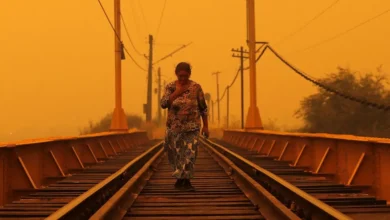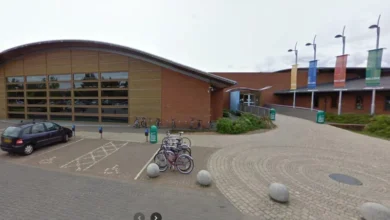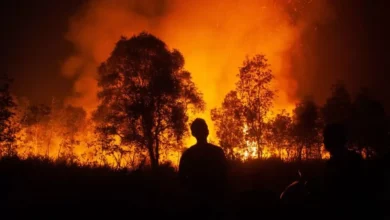More Myanmar quake survivors pulled from rubble
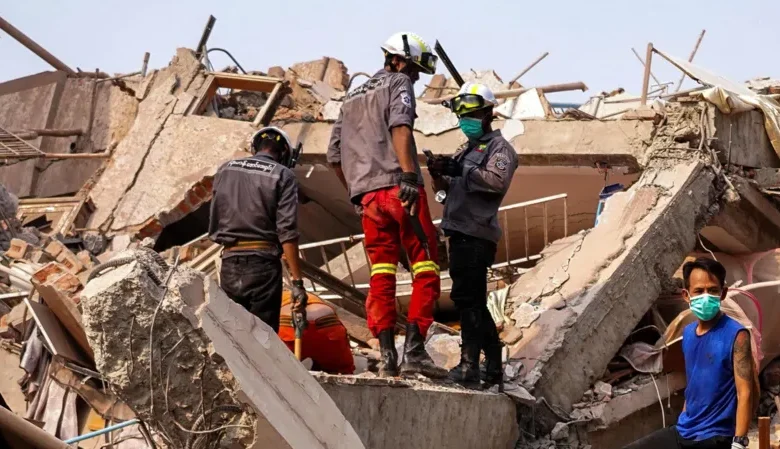
Four more people have been pulled from rubble nearly 60 hours after a powerful 7.7 magnitude earthquake struck Myanmar on Friday, killing at least 1,700 people in the South East Asian country.
The survivors were rescued from a collapsed school building in the northern Sagaing region, from which a body was also recovered, Myanmar’s fire service said.
Hundreds of people remain missing, with search and rescue efforts under way in both Myanmar and neighbouring Thailand.
The death toll has risen to 18 people in the Thai capital, Bangkok, where 76 workers are still missing following the collapse of a high-rise building that had been under construction.
Friday’s earthquake occurred near Myanmar’s second-largest city Mandalay, along the Sagaing fault – with tremors affecting several other nations.
Although rescue efforts have been under way since Friday, and international aid is starting to reach Myanamar, there have been delays in reaching the worst-hit areas, leaving locals to attempt to dig survivors out by hand.
On Saturday night, an elderly woman was rescued in Myanmar’s capital, Nay Pyi Taw, after being trapped for 36 hours under the rubble of a hospital.
Footage showed her being carried on a stretcher to a waiting ambulance, surrounded by emergency workers.

Twenty-nine people were also rescued from a collapsed apartment block in Mandalay, the local fire authority said on Sunday.
The earthquake struck around 12:50 local time (06:20 GMT) on Friday, just 10km (6.2 miles) from the surface – meaning its effects at ground level were felt more strongly than a deeper quake.
A second earthquake struck 12 minutes later, with a magnitude of 6.4 and an epicentre 18km (11 miles) south of Sagaing, the regional capital, which sits near Mandalay.
Aftershocks have continued since. On Sunday a magnitude-5.1 tremor was recorded north-west of Mandalay.
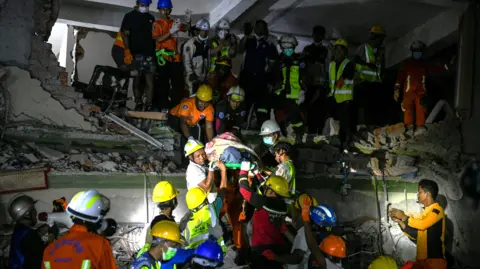
In Bangkok, where soft soil made the shaking more intense, an unfinished tower block collapsed, burying many who had been working at the site.
Thailand’s Deputy Prime Minister Anutin Charnvirakul said on Sunday that rescuers had detected signs of life under the rubble at the site, but cautioned that they were weak.
“Anomalies” have been found in the steel used in the building’s construction, and samples have been collected for testing, Thailand’s Industry Minister Akanat Promphan told the media on Sunday.
Families have been anxiously waiting for updates. One woman in Thailand, whose husband was working on the tower when it collapsed, said that she would wait “for as long as it takes”.

International rescue teams have been joining the disaster effort, with several countries sending assistance to Myanmar. These include:
- China sending an 82-person rescue team
- A 51-strong team arriving from Hong Kong on Sunday
- India sending an aid flight carrying a rescue team and emergency supplies
- Malaysia’s foreign ministry saying it would send a 50-person team to support disaster relief operations
- The Philippines, Vietnam, Indonesia, Ireland, South Korea, Russia, New Zealand and the US are also sending rescue teams
- UK Foreign Secretary David Lammy pledging £10m in aid to help “those most in need”
Meanwhile, Myanmar’s ruling military junta has continued bombing parts of the civil war-gripped country. The UN described the attacks as “completely outrageous and unacceptable”.
Pro-democracy rebel groups that are fighting to remove the military from power have reported aerial bombings in the Chaung-U township in the Sagaing region.
The military regime seized power in a coup in 2021, but it no longer controls many parts of the country, which are divided among rebel groups.
The National Unity Government, which represents the ousted civilian administration, said that its armed forces would begin a two-week pause in “offensive military operations, except for defensive actions” in areas affected by the earthquake from Sunday.
People in Myanmar could face further displacement when the monsoon season arrives.
Last year there was “severe flooding which damaged homes [and] sanitation facilities”, Lauren Ellery, of the International Rescue Committee,said.
“We are coming into monsoon season again in May, with rain starting in April,” she said.


